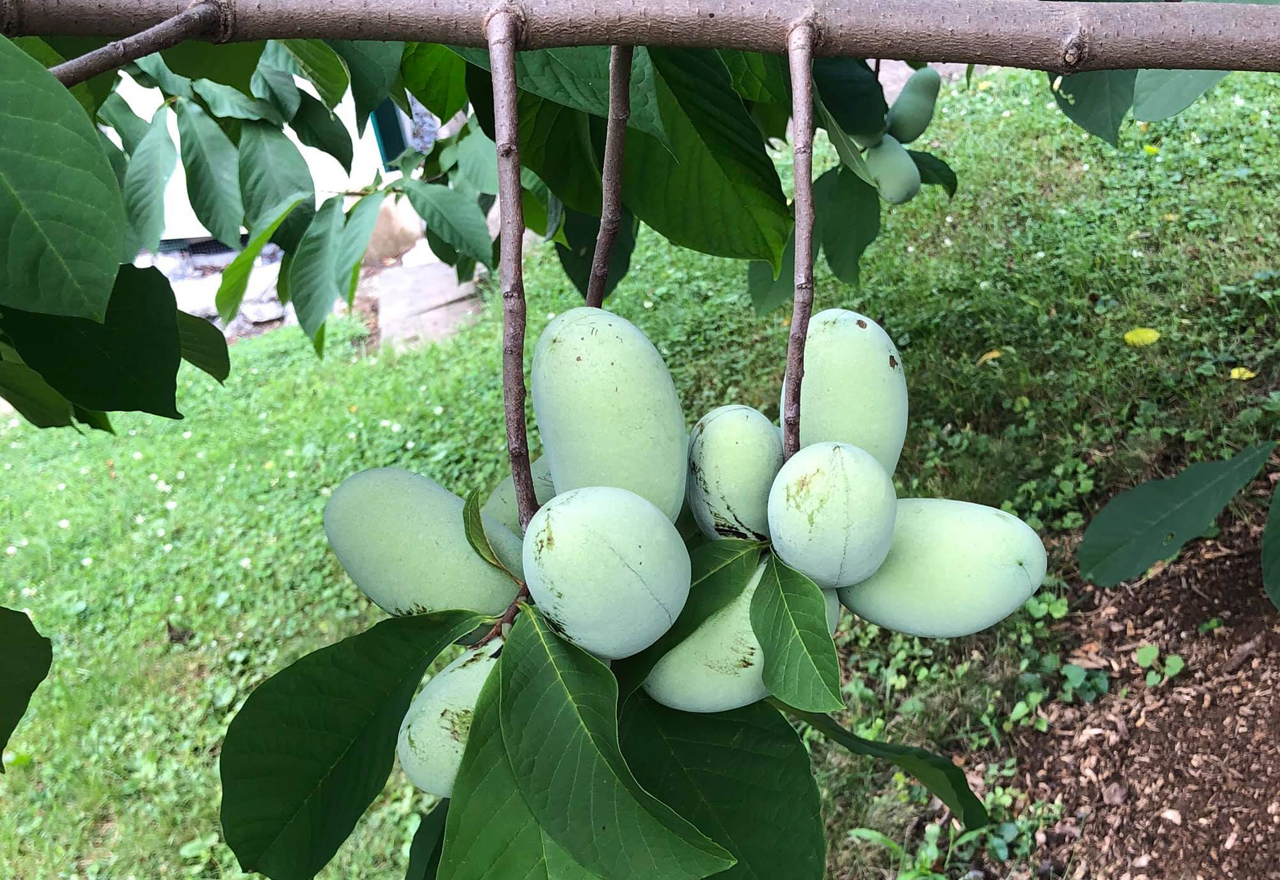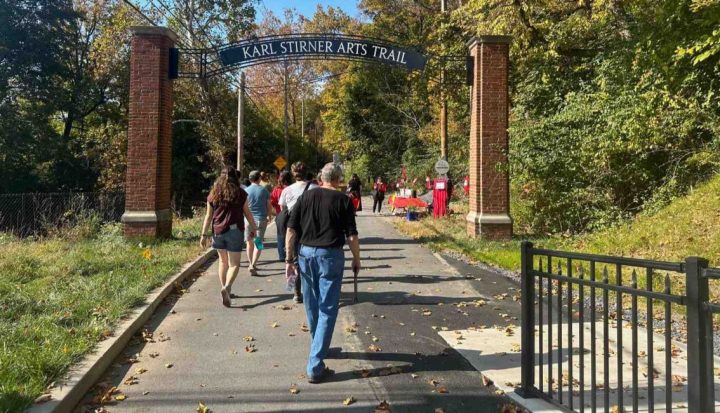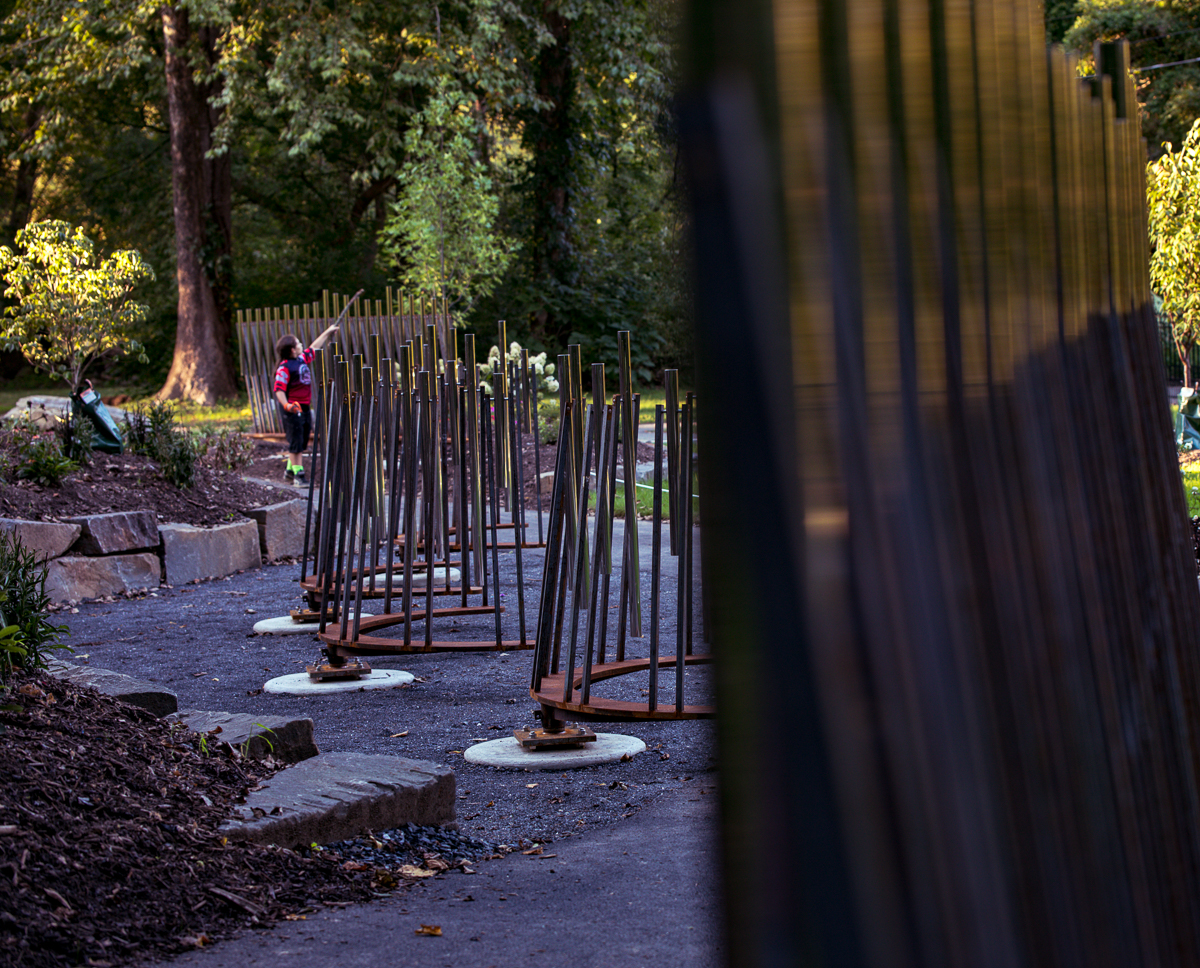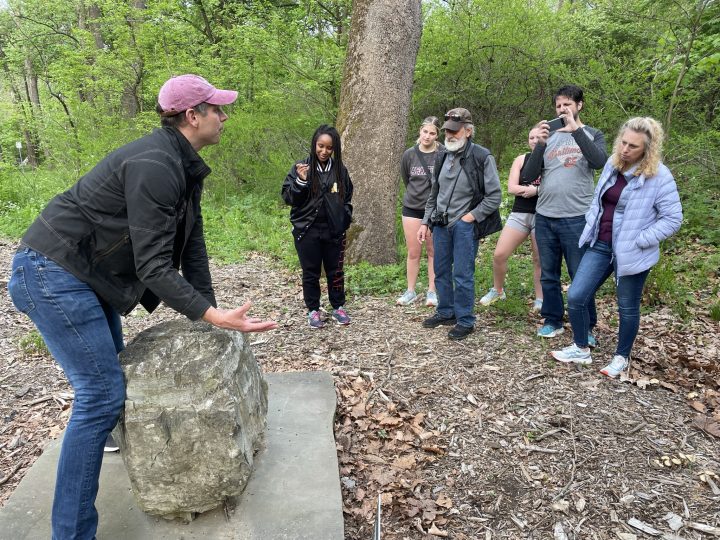Learn about native paw paw fruits and the recently planted grove on the Karl Stirner Arts Trail on Saturday, June 17, at 11 a.m. by the Musical Chimes installation near the KSAT dog park.
Easton resident Philip Chung will share his experience as a fruit orchard grower and arborist in a discussion of how you can grow and care for paw paws and other indigenous Pennsylvania fruits.
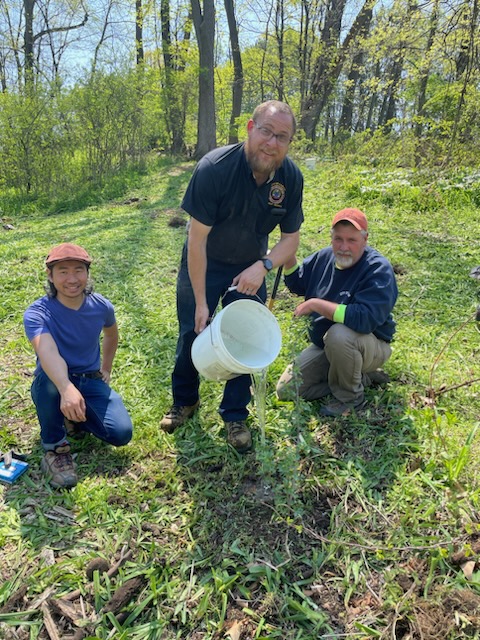 Chung recently met up with Easton Parks and Recreation workers Kyle Leh and Bob Keagy as well as KSAT Executive Director Jim Toia to plant the following in the newly carved grove on the slope adjacent to the KSAT “movie hill” above the chimes: four pawpaw trees, a European pear tree, thimbleberry bushes, and golden currant bushes.
Chung recently met up with Easton Parks and Recreation workers Kyle Leh and Bob Keagy as well as KSAT Executive Director Jim Toia to plant the following in the newly carved grove on the slope adjacent to the KSAT “movie hill” above the chimes: four pawpaw trees, a European pear tree, thimbleberry bushes, and golden currant bushes.
All plants were generously donated by Chung and his partner, Kevin Sirotnak, who have their orchard in South Side Easton.
Paw paws have a broad growing range that tops out in Pennsylvania. Most groves are found further south, though some of the older native groves can be found in rural Pennsylvania.
“Usually paw paw patches are guarded secretly like valuable mushroom haunts, but the KSAT is happy to celebrate these rare and wonderful fruits,” says Toia. “While we are excited to have them on the trail, our visitors will have to be patient. Paw paws take up to six years to mature before bearing fruit. But don’t worry, the thimbleberry and golden currant bushes should bear fruit this year — fingers crossed!”
Top photo by Kevin Sirotnak
About Philip Chung
Chung’s educational background is in engineering with a bachelor of science in operations research from Columbia University, but he has always held a passion for horticulture and has been a lifelong gardener from an early age. He first encountered paw paws in the spring of 2010, when an unusual landscape tree at his parents’ New Jersey home produced curious, bell-shaped, maroon flowers.
After doing some research online, Chung discovered that it was an asimina triloba, or paw paw, the largest edible North American fruit and the East Coast’s only indigenous subtropical fruit tree. In order to produce fruit, the tree required another specimen as a pollinator, so a second tree was purchased from a nursery and planted nearby.
After five years, the pair of trees finally bore several clusters of strange-looking fruit, and Chung had his first taste of this hard-to-find delicacy. He was instantly enamored with its custard-like texture and delectable tropical flavor.
Over the last decade, Chung and his partner have privately cultivated several varieties of paw paw at their home in South Side Easton, learning about its care, propagation, and grafting techniques for consistent harvests along the way. Now, in collaboration with KSAT, Philip is hoping to share that knowledge and preserve its historical roots by establishing a forage-friendly paw paw patch and walking path along the Karl Stirner Arts Trail, where visitors of all ages can discover, learn about, and try this unique native fruit.

